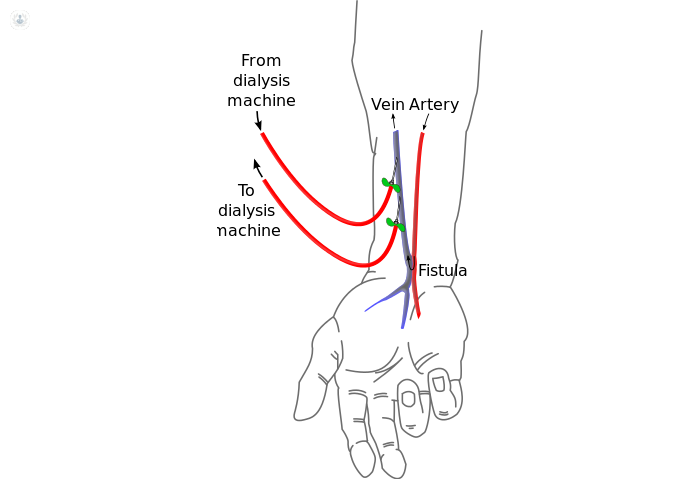


What is vascular access surgery?
Vascular access surgery is a simple procedure that aims to connect an artery with a vein in your arm. It is a life-saving procedure for people who require dialysis.

Why is it done?
Vascular access surgery is recommended in patients who have end-stage renal disease or a severe form of chronic kidney disease. In these patients, the kidneys are no longer able to filter your blood and remove harmful substances.
Artificial dialysis machines keep patients in these circumstances alive by performing the role of the kidneys – taking in blood and filtering out the harmful substances.
Vascular access prepares you for dialysis treatment, by making a blood vessel easily available to the dialysis machine.
What does it involve?
Vascular access surgery can be performed as a day case procedure, meaning you won’t have to stay overnight in hospital. Vascular access involves the creation of one of the following:
Of the two options, arteriovenous grafts tend to have a higher chance of infection and blockage.
During the procedure you will receive a local anaesthetic in your arm and you may be given a mild sedative.
How do you prepare for vascular access surgery?
Before the procedure itself you will meet with the surgeon to plan where the access will be created. This involves taking a scan of the blood vessels in your arm to determine:
The aim is to determine which blood vessels are the most suitable for use.
Aftercare
After the procedure you might be given some painkillers, and you will be asked to keep your arm raised above your heart to reduce the risk of swelling.
You’ll also be given some advice on how to look after your access. It’s important to:
Finally, you’ll be given advice on how to monitor your access, and when to see a doctor. For example you should seek immediate help if you suspect the flow of blood may be blocked.